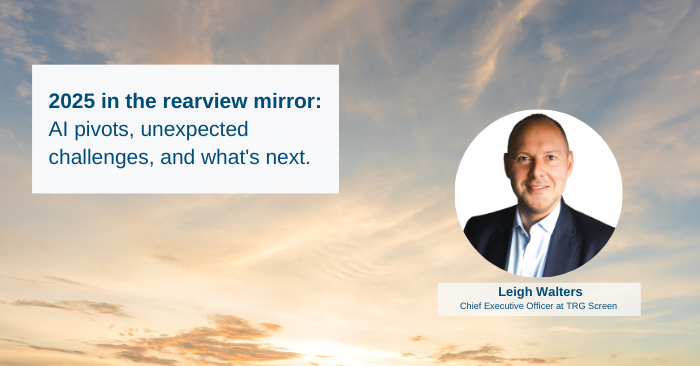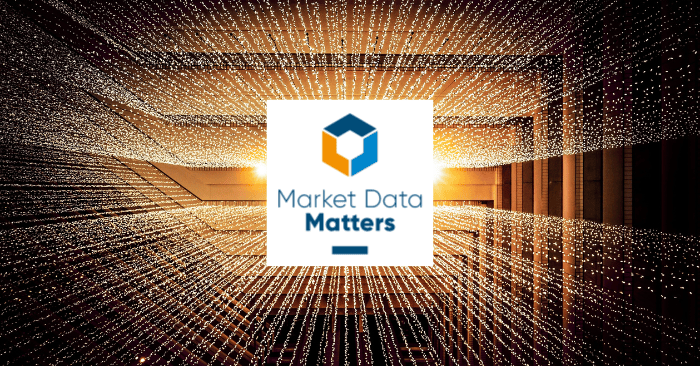So how can businesses take control of their data? How can companies track, manage, and understand their reference data? And more to the point, what can organizations do to optimize their data so they can get a clear return on investment?
To explore these questions, we brought together a group of financial services and trading technology experts for a panel discussion. In the panel, Clive Posselt from The Realization Group heard from Vitalij Smoljaninov, Head of Data Management at Metzler Asset Management and Jon Hunt, Chief Technology Officer at a large asset manager. Rounding out the group was Amjad Zoghbi, Business Development Director - Xmon - TRG Screen, and Marc Michels, Managing Director International - TRG Screen.
.png?width=700&height=366&name=Speakers%20(3).png)
What ensued was a fascinating discussion about reference data – why so many companies are passively consuming it, how costs are staking up and what can be done to turn the tide.
An expensive resource
Reference data is an expensive commodity – it accounts for 10 to 30 per cent of a typical market data budget. Within multinational organizations, the figure can be even larger, with some companies allocating millions of dollars to it. On top of this, vendors have different ways of charging for the data that they provide – some have metered pay-as-you-go products, while others come with fixed deals or volume-based agreements.
To make matters more complicated, there are often rules on how data should be used. Data aggregators are a case in point. They’re renowned for taking a hard line on data usage and will often call users after the information has been accessed to check it has been handled properly.
“Overall, it’s a pretty complex situation and it isn’t getting easier,” says Amjad Zoghbi, Business Development Director - Xmon - TRG Screen. “But the big issue is that companies are passively managing their data.” Usually, organizations will access data and receive an invoice at the end of the month. Rather than taking such a passive approach, businesses should seek to manage their data proactively. By doing so, they can reduce operational risk, increase efficiency and improve decision-making.
Adopting new business practices
So, what practices should companies adopt to make this transition? Tracking data usage effectively – understanding where the data is originating from, knowing who is consuming it and seeing where it is going – is a vital first step. Putting in place benchmarks that trigger alerts when there is abnormal data usage is equally important.
Beyond that, businesses need technology that can bridge the gap between market data teams and their consumers. By making this information flow smooth, efficient and readily repeatable, businesses can get better at forecasting spend, allocating costs and interrogating data.
Recording session 1
Webinar session together with Vitalij Smoljaninov, Head Of Data Management at Metzler Asset Management.
Recording session 2
Webinar session together with Jon Hunt, Chief Technology Officer at an Asset Manager.
Clamping down on poor data usage
Two companies that have actively embraced these practices and changed their data consumption models are Metzler Asset Management and another large asset management firm that participated in the discussion. In the case of Metzler, it was able to use new technology to identify a spike in data usage. “We traced it back to its source and a specific date,” says Vitalij Smoljaninov, Head of Data Management at Metzler. “And with that insight, we were able to avoid unneeded usage in the future.”
Aside from this one incident, the platform has given Metzler a significant return on investment (ROI) in a short space of time. “I’m not able to go into the specifics, but once we had all the required data in place, we were able to get the first returns within days and weeks,” says Smoljaninov.
Like Metzler, the other firm on the panel turned to new technology to get a better return on investment. The company – which manages assets for the world’s leading investors – was pulling down tens of thousands of data points every day and seeing its data licensing bills soar. After an aborted attempt to make sense of its data consumption using Microsoft Excel, it decided to invest in a reference data management platform.
Saving thousands of dollars
“It’s my job to make sure we’re not wasting money on data,” says Jon Hunt, Chief Technology Officer. “When you have multiple portfolios and you don’t want to hire headcount to look at this, you need a specific reference data management tool.”
Acquiring new technology has given the firm a different perspective on its data usage. “When you get a message from your provider telling you that you’re requesting data seventeen times from four different systems you pay attention,” says Hunt. With access to such valuable intelligence, the company has already been able to save hundreds of thousands of dollars.
So, what features should a business look for in a solution if they want to replicate these results? First and foremost, companies should seek out a platform that gives them control over their reference data costs. “I would consider a buy versus build solution,” says Marc Michels, Managing Director International - TRG Screen. “Time to value and ROI are critical when it comes to managing reference data.”
Optimizing reference data in real-time
With a solution like Xmon from TRG Screen it is now possible to track, manage and optimize reference data. Xmon comes with a very modern data stack that can process high volumes of data and provide analytics in real-time. It allows organizations to identify whether certain calls are non-compliant or too costly. And, depending on the usage case, it can be used to potentially block non-compliant calls through a dedicated rules workflow.
Lastly, Xmon can be used to simulate usage conditions. For example, whether a call would breach compliance or what impact a new commercial model would have on spend under specific simulated conditions.
Want to learn more about Xmon?





